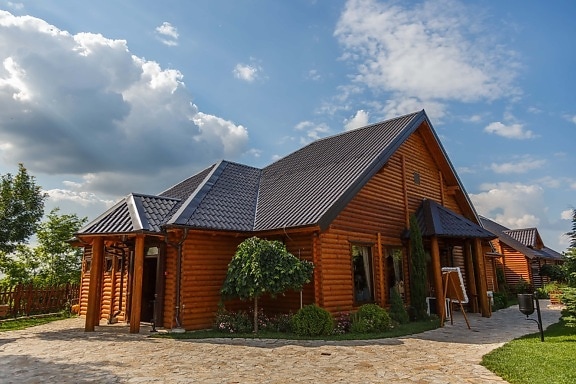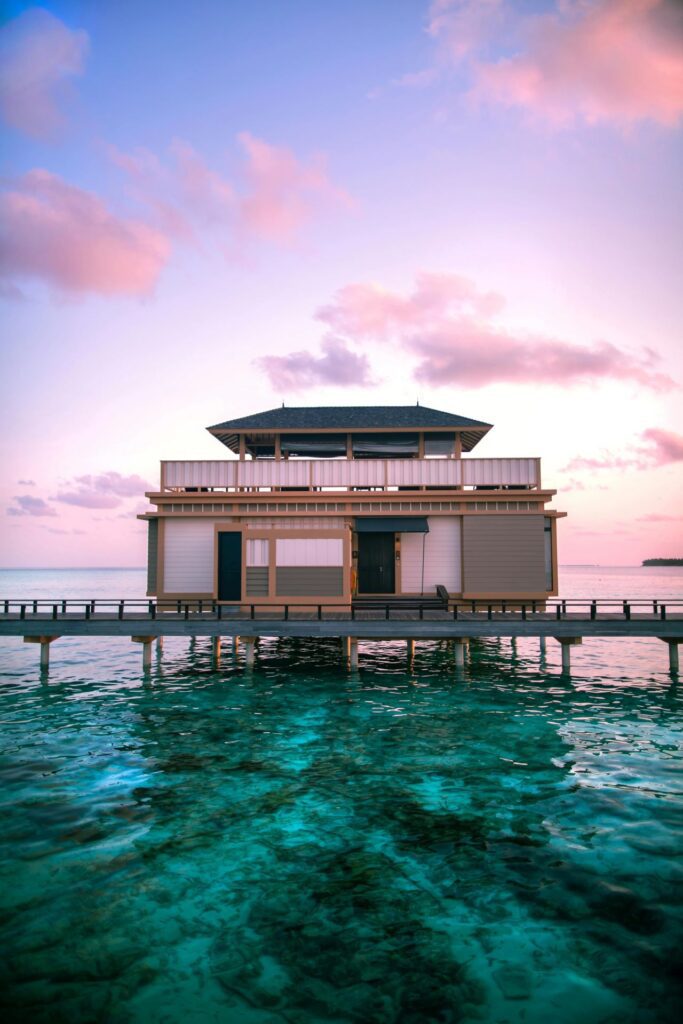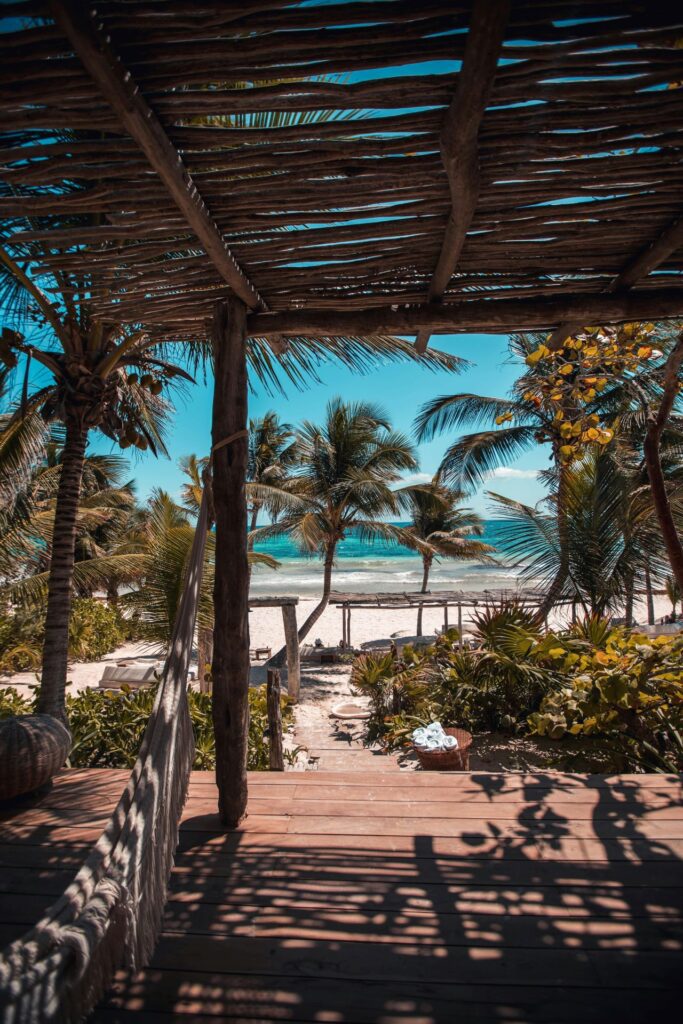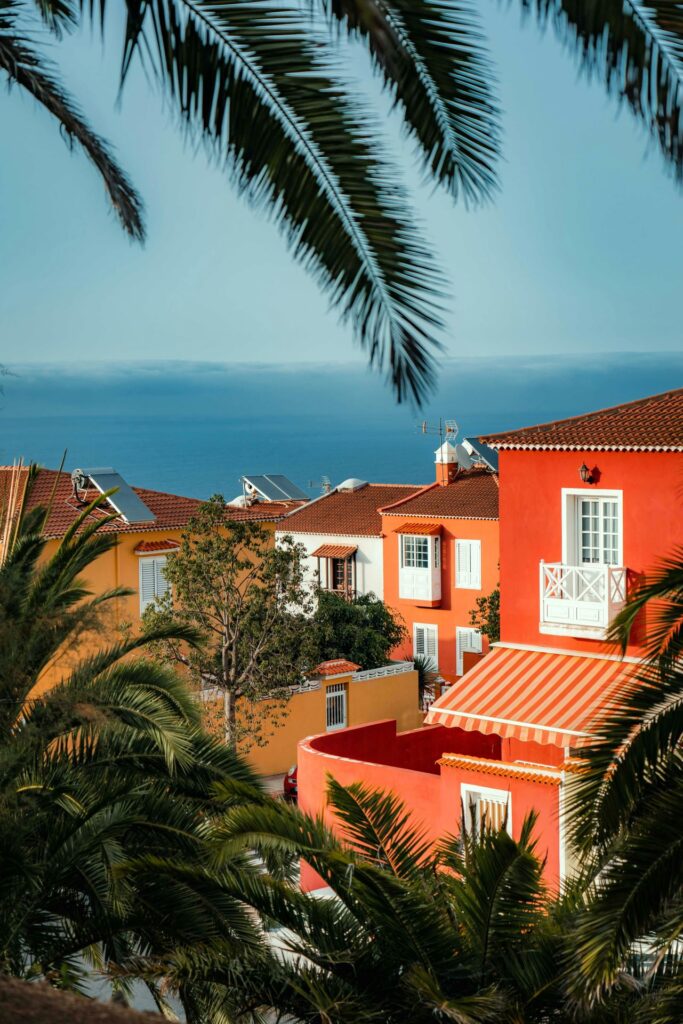Designing a villa in a tropical climate is an exciting endeavor that brings its own set of unique challenges and opportunities. With vibrant landscapes, stunning views, and the allure of outdoor living, the right choices can transform a house into a dream retreat. One of the most critical decisions in this journey is the selection of colors. The hues we choose do not merely impact the aesthetic appeal of the villa; they also play a vital role in enhancing thermal comfort and creating a harmonious atmosphere that invites relaxation and joy. In this article, we will delve into the best color palettes that can elevate the beauty of villas in tropical regions while ensuring comfort and sustainability. Whether you’re drawn to light colors for their cooling properties or earthy tones that blend seamlessly with nature, this guide will help you make informed decisions that reflect both your style and the enchanting environment around you.
Understanding the Tropical Climate
Creating a villa in a tropical climate requires a deep understanding of the environment to ensure both comfort and aesthetic appeal. The unique characteristics of tropical climates significantly influence architectural design and the choice of materials and colors. As you embark on this exciting journey, it’s crucial to grasp how these elements interact with one another.

Characteristics of Tropical Climates
Tropical climates are defined by consistently high temperatures and elevated humidity levels year-round. These conditions create a vibrant and lush environment, but they also present challenges for homeowners. The intense sunlight and UV exposure can lead to rapid wear and tear on building materials, resulting in increased maintenance costs and a shorter lifespan for your villa.
In these climates, the importance of thermal comfort cannot be overstated. High humidity and heat can create uncomfortable indoor environments, making it vital to choose colors that not only look appealing but also serve functional purposes. Light colors, for instance, reflect sunlight more effectively, helping to maintain cooler indoor temperatures. This thoughtful approach to color selection is essential for creating a pleasant living space that balances style with functionality.
Furthermore, the choice of exterior colors can impact how your villa interacts with the surrounding landscape. Colors that harmonize with the natural environment not only enhance the villa’s aesthetic but also help it blend seamlessly into its tropical surroundings, creating a cohesive and inviting atmosphere.
The Importance of Color in Tropical Architecture
Color selection is fundamental in architectural design for tropical areas. It goes beyond mere aesthetics; the right colors can significantly affect a villa’s performance in terms of heat absorption and overall comfort. For example, lighter shades such as whites, creams, and soft pastels reflect sunlight, helping to keep indoor spaces cooler and more comfortable. On the other hand, darker colors tend to absorb heat, which can lead to an uncomfortably warm environment.
In addition to their thermal benefits, colors can also influence the emotional ambiance of a space. By strategically using color palettes that evoke feelings of tranquility and relaxation, homeowners can create soothing atmospheres conducive to rest and rejuvenation. Earthy tones, for instance, bring a sense of connection to nature, making them perfect for tropical villas that seek to embrace their lush surroundings.
Moreover, colors can alter the perception of space within a villa. Light colors can make rooms feel more expansive and airy, while darker hues can create cozy, intimate settings. Understanding how to manipulate color to your advantage allows homeowners to craft spaces that are not only visually appealing but also functional and inviting.
In summary, when designing a villa in a tropical climate, it is essential to consider both the characteristics of the climate and the critical role of color in architectural design. By selecting the right colors, homeowners can enhance their villa’s aesthetic appeal while ensuring a comfortable living environment that stands the test of time.

Color Palettes for Tropical Villas
Choosing the right color palettes is crucial for creating a beautiful and comfortable villa in a tropical climate. The interplay of colors can significantly influence the overall aesthetics, ambiance, and even the energy efficiency of the home. Let’s explore three main categories of color palettes that work exceptionally well in these vibrant environments: light colors, earthy tones, and vibrant accents.
Light Colors for Heat Reflection
Utilizing light colors is one of the most effective strategies for villas situated in tropical climates. Shades like white, cream, pale yellow, and light blue do more than just enhance visual appeal; they play a pivotal role in maintaining a comfortable indoor environment. Here are some key benefits of incorporating light colors:
- Reduced Heat Absorption: Light colors are highly reflective, meaning they bounce sunlight away rather than absorbing it. This characteristic significantly lowers the amount of heat retained by the villa, helping to keep interiors cool and comfortable throughout the day.
- Bright and Airy Atmosphere: Light hues create an illusion of spaciousness, making rooms feel larger and more open. This quality not only enhances the overall aesthetic appeal but also contributes to a more inviting and pleasant living environment. Natural light interacts beautifully with light colors, further amplifying the brightness and cheerfulness of the space.
Moreover, light colors can also minimize the need for artificial lighting during the day, thus contributing to energy efficiency. By harnessing the natural sunlight, homeowners can create a more sustainable living environment while also reducing electricity costs.
Earthy Tones for Natural Harmony
Incorporating earthy tones such as terracotta, beige, and soft greens can create a harmonious connection between the villa and its surrounding landscape. These colors evoke a sense of tranquility and warmth, making them ideal choices for tropical villas. The benefits of using earthy tones include:
- Blending with Nature: Earthy colors mimic the hues found in nature, allowing the villa to seamlessly integrate with its environment. This approach not only enhances the villa’s aesthetic appeal but also fosters a sense of peace and serenity. Homeowners can create a sanctuary that feels in tune with the lush landscapes typical of tropical regions.
- Warm and Inviting Spaces: These tones contribute to a cozy atmosphere, encouraging relaxation and comfort. By using earthy hues in living areas, bedrooms, and outdoor spaces, homeowners can cultivate a welcoming environment that invites both family and guests to unwind and enjoy the beauty of their surroundings.
Additionally, earthy tones can create a visually appealing contrast when paired with light colors. For instance, using terracotta tiles or soft green accents alongside light walls can create a stunning balance, enhancing both the interior and exterior aesthetics of the villa.

Vibrant Accents for Energy
While light and earthy colors lay the foundation for the villa’s color palette, incorporating vibrant accents can introduce energy and personality into the design. Bright hues such as coral, turquoise, and sunny yellow can be used strategically for doors, window frames, and decorative elements. Here are the advantages of adding vibrant colors:
- Creating Focal Points: Vibrant colors can draw attention to specific architectural features or landscape views, enhancing the visual impact of the villa. For example, a bright coral door can serve as a striking focal point against a backdrop of soft beige walls, creating a memorable first impression.
- Injecting Life and Character: These colors reflect the lively spirit of tropical environments, adding a cheerful touch to the overall design. By strategically placing vibrant accents throughout the villa, homeowners can create a dynamic and inviting atmosphere that resonates with the tropical lifestyle.
Moreover, incorporating vibrant colors in outdoor spaces, such as patios and gardens, can enhance the overall experience of living in a tropical villa. Brightly colored cushions, outdoor furniture, and decor can transform these spaces into vibrant extensions of the home, perfect for entertaining and enjoying the natural beauty of the surroundings.
In summary, the careful selection of color palettes—incorporating light colors for heat reflection, earthy tones for natural harmony, and vibrant accents for energy—can significantly enhance the aesthetics and comfort of tropical villas. By embracing these color strategies, homeowners can create stunning, inviting spaces that harmonize with their environment while ensuring thermal comfort and visual appeal.
Conclusion
Selecting the right colors for villas in tropical climates is crucial not only for achieving an appealing aesthetic but also for ensuring optimal thermal comfort. The impact of color choice extends beyond mere decoration; it plays a vital role in the overall functionality and sustainability of the villa.
By using light colors such as white, cream, and soft pastels, homeowners can effectively reflect heat and minimize indoor temperatures, creating a cool and inviting atmosphere. These colors also contribute to a bright and airy environment that enhances the visual appeal of the living spaces, making them feel more expansive and welcoming.
Incorporating earthy tones like terracotta, beige, and soft greens allows the villa to blend seamlessly with its natural surroundings. These hues evoke a sense of tranquility and warmth, fostering a harmonious connection between the home and the lush landscapes typical of tropical regions. Earthy colors not only enhance the aesthetic but also create cozy and inviting spaces that encourage relaxation and comfort.
Additionally, adding vibrant accents—such as coral, turquoise, and sunny yellow—infuses energy and personality into the villa’s design. These bold colors serve as focal points that draw attention to unique architectural features and outdoor spaces, enhancing the overall visual impact and reflecting the lively spirit of tropical living.
Ultimately, by thoughtfully combining these color strategies, homeowners can create stunning, comfortable living environments that resonate with the beauty and vibrancy of their tropical surroundings. Embracing the right color palettes is not just about beautifying the villa; it’s about crafting a space that nurtures well-being, promotes sustainability, and celebrates the natural allure of tropical living.
In conclusion, the art of color selection in tropical villa design is a powerful tool for achieving a balance between aesthetics and functionality. By embracing light colors, earthy tones, and vibrant accents, homeowners can transform their villas into serene sanctuaries that harmonize with the stunning landscapes around them while ensuring a comfortable and inviting atmosphere.

FAQs
Light colors like white, cream, and soft pastels are excellent for reflecting heat. Earthy tones and vibrant accents can enhance the overall aesthetic.
Light colors reflect sunlight, reducing heat absorption, while darker colors tend to absorb more heat, making spaces warmer.
While dark colors can create a striking look, they may lead to higher indoor temperatures. If you choose dark shades, consider using them as accents rather than primary colors.
Due to the intense sun and humidity, it’s advisable to repaint every 5 to 7 years to maintain aesthetics and protect the underlying materials.
A satin or semi-gloss finish is often recommended for exterior paints in tropical climates, as they offer better durability and easier cleaning.
Yes, attractive and suitable color choices can enhance a villa’s curb appeal, positively influencing its resale value.
Start with a neutral base and add color through furnishings, accents, and decor elements to create a balanced design.
Dark colors like deep browns and blacks should be used sparingly, as they absorb heat and may increase indoor temperatures.
Consider the surrounding environment, desired mood, and the amount of sunlight your villa receives when selecting a color palette.
Yes, colors can significantly impact emotions. For instance, blues and greens tend to evoke calmness, while bright colors can energize and uplift the space.

